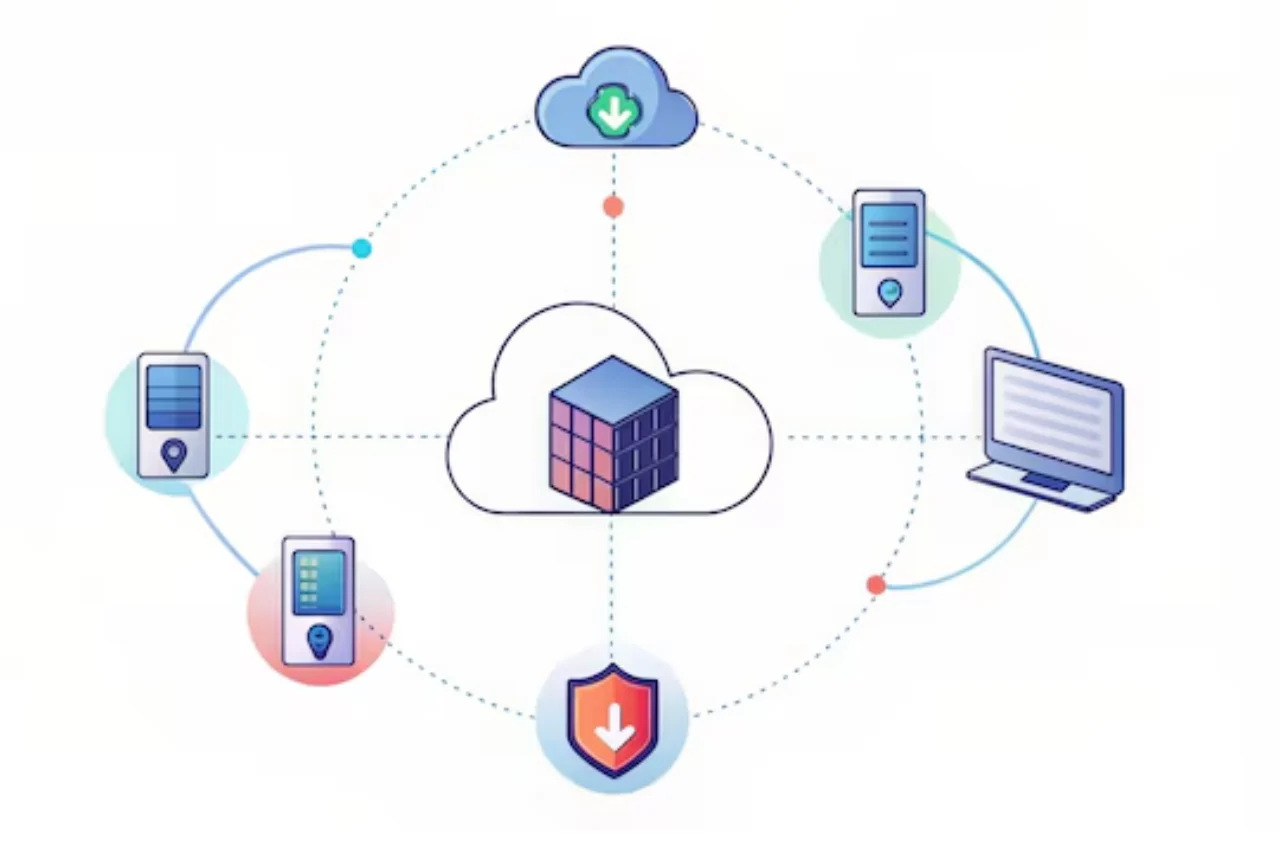A CDN works by storing website content on servers worldwide for faster user access. It reduces latency and speeds up website loading times significantly.
In today’s digital landscape, the effectiveness of Content Delivery Networks (CDNs) cannot be overstated. By distributing content across various servers strategically placed worldwide, CDNs ensure that users can access websites quickly and efficiently. This not only enhances user experience but also boosts website performance and SEO rankings. With the growing emphasis on speed and accessibility, integrating a CDN into your web infrastructure has become essential for businesses looking to stay competitive in the online sphere.
We will delve deeper into how CDNs work and why they are a vital component of modern web development strategies.
Table of Contents
What is CDN
A Content Delivery Network (CDN) is a network of distributed servers designed to deliver web content efficiently to users based on their geographical location. By caching copies of static assets such as images, videos, and web pages across multiple servers, a CDN reduces latency and improves load times. When a user requests content, the CDN serves it from the nearest server, minimizing travel time and server load. This not only enhances the user experience by providing faster access but also improves website reliability and scalability by handling high traffic volumes.

Faster Load Times
A Content Delivery Network (CDN) plays a crucial role in improving website performance by distributing content across multiple servers located geographically closer to the users. This results in faster load times as the CDN delivers content from the nearest server, reducing latency and improving overall user experience.
Improved User Experience
By leveraging a CDN, websites can ensure an improved user experience through faster loading speeds, reduced buffering time for multimedia content, and enhanced overall website performance. This ultimately leads to higher user satisfaction and increased engagement.
Higher Search Engine Rankings
Implementing a CDN can positively impact search engine rankings by contributing to faster load times, improved user experience, and lower bounce rates. Search engines prioritize websites that offer a seamless user experience, making CDN integration a key factor in achieving higher rankings.
Importance of CDN for Website Performance
CDN plays a crucial role in website performance by distributing content to servers located closer to users, reducing latency and loading times. This is achieved through caching and delivering content from the nearest server, optimizing website speed and overall user experience.
Factors to Consider
Choosing the right CDN provider is crucial for optimizing website performance. Consider factors like geographic coverage, performance, security, and pricing.
- Geographic Coverage: Ensure the CDN has servers in locations that cater to your target audience.
- Performance: Look for low latency, high uptime, and fast content delivery for improved user experience.
- Security: Prioritize DDoS protection, SSL support, and security features to safeguard your website.
- Pricing: Compare pricing plans, overage charges, and contract terms to find a cost-effective solution.
Comparing Top CDN Providers
When evaluating CDN providers, compare key metrics such as network size, reliability, customer support, and integration options.
- Network Size: Assess the number of PoPs and global reach to ensure comprehensive coverage.
- Reliability: Look for SLA guarantees and performance history to gauge reliability.
- Customer Support: Seek 24/7 support, technical expertise, and response times for assistance.
- Integration Options: Check for compatibility with your platform and ease of implementation for seamless integration.
Consider these factors to select a CDN provider that aligns with your website needs and business goals.
Choosing The Right CDN Provider
Discovering the right CDN provider involves understanding how CDNs operate to enhance website performance and user experience. By selecting a reliable provider, businesses can ensure faster loading times and improved content delivery globally. Opting for a reputable CDN service can significantly boost website speed and reliability.

Step by step Guide
Implementing CDN on your website can significantly boost loading speeds and enhance user experience. Let’s dive into a step-by-step guide on how to seamlessly integrate CDN into your site.
- Choose a CDN Provider: Select a reputable CDN provider that aligns with your website’s needs.
- Sign Up and Create an Account: Register with the chosen CDN provider and create an account to access their services.
- Configure CDN Settings: Follow the provider’s instructions to configure CDN settings for your website.
- Integrate CDN with Your Website: Implement the necessary codes or plugins to connect your site to the CDN network.
- Test CDN Performance: Conduct thorough testing to ensure the CDN is functioning correctly and optimizing content delivery.
- Monitor and Optimize: Regularly monitor CDN performance metrics and make necessary optimizations for improved results.
Common Challenges and Solutions
While implementing CDN on your website, you may encounter some challenges. Here are common issues and their solutions to streamline the process.
| Challenge | Solution |
| Compatibility Issues | Ensure CDN is compatible with your website platform and make necessary adjustments. |
| Content Synchronization | Regularly synchronize content between your origin server and CDN to avoid discrepancies. |
| Security Concerns | Implement security measures such as SSL certificates and access controls to protect your CDN content. |
Implementing CDN on Your Website
Monitoring and optimizing CDN performance is crucial for ensuring fast and reliable content delivery to users. By closely monitoring key metrics and implementing best practices for optimization, businesses can enhance the efficiency and effectiveness of their CDN, leading to improved user experiences and website performance.
Key Metrics to Track
When it comes to monitoring CDN performance, tracking key metrics is essential for identifying areas of improvement. Some of the key metrics to track include:
- Response time
- Cache hit ratio
- Bandwidth usage
- Server errors
Best Practices for Optimization
Optimizing CDN performance involves implementing best practices to enhance content delivery efficiency. Some best practices for optimization include:
- Leveraging caching: Utilize caching strategies to reduce origin server load and improve content delivery speed.
- Content compression: Compressing content before delivery can significantly reduce load times and improve user experiences.
- Minification: Minify CSS, JavaScript, and HTML files to reduce file sizes and enhance delivery speed.
- Image optimization: Optimize images to minimize file sizes without compromising visual quality, leading to faster load times.
Monitoring and Optimizing CDN Performance
To ensure optimal performance, constant monitoring and optimization of CDN is essential. By analyzing data and making necessary adjustments, CDN can effectively deliver content to users, improving loading times and overall user experience. Regular performance checks and adjustments are key to ensuring that CDN is working efficiently.
CDN or Content Delivery Network has become an essential part of website development and management. Its ability to provide faster content delivery, improved website performance, and better user experience has made it a go-to solution for website owners. As technology continues to evolve, the future of CDN looks promising. In this article, we’ll take a closer look at the emerging trends and technologies that will shape the future of CDN and their impact on website performance.
Emerging Trends and Technologies
The CDN industry is constantly evolving, and new technologies are emerging to improve its functionality. Some of the emerging trends and technologies that will shape the future of CDN include:
- Edge Computing: This technology brings processing closer to the end-users, reducing latency and improving website performance. CDN providers are adopting this technology to provide faster content delivery.
- AI and Machine Learning: These technologies are being used to optimize CDN performance, predict user behavior, and provide personalized content delivery.
- Blockchain: This technology is being explored to improve security and provide a decentralized CDN network.
- 5G: The rollout of 5G networks will provide faster internet speeds and enable CDN providers to deliver content more efficiently.
Impact on Website Performance
The future of CDN is not just about new technologies, but also about improving website performance. CDN providers are constantly working to improve their services to provide faster content delivery and better user experience. Some of the impacts of CDN on website performance include:

- Faster Load Times: CDN providers cache content at various locations, reducing the distance between the server and end-users, resulting in faster load times.
- Better User Experience: Faster load times and improved website performance translate to a better user experience, resulting in higher engagement and conversion rates.
- Improved SEO: Website speed is a crucial factor in SEO. CDN can help improve website speed, resulting in higher search engine rankings.
- Reduced Server Load: CDN offloads some of the server load, reducing the risk of server crashes and downtime.
In conclusion, the future of CDN looks promising with the adoption of new technologies and the focus on improving website performance. Website owners can leverage CDN to provide faster content delivery, better user experience, and improved SEO.
Conclusion
CDN plays a vital role in optimizing website performance and enhancing user experience. Its efficient content delivery system helps businesses reach global audiences with ease. By reducing latency and improving page load times, Cdn contributes to higher search engine rankings and improved SEO. Embracing CDN technology can lead to a competitive edge in the digital landscape.


